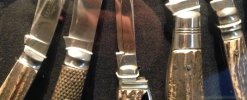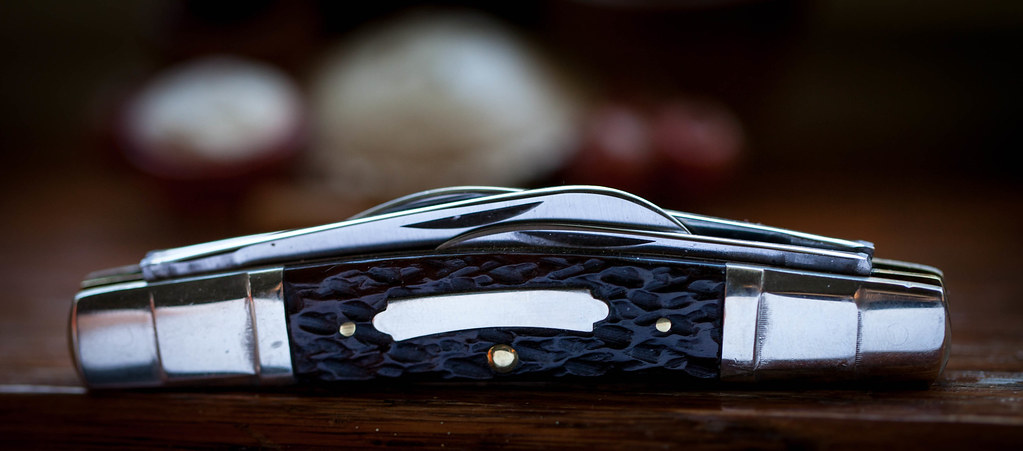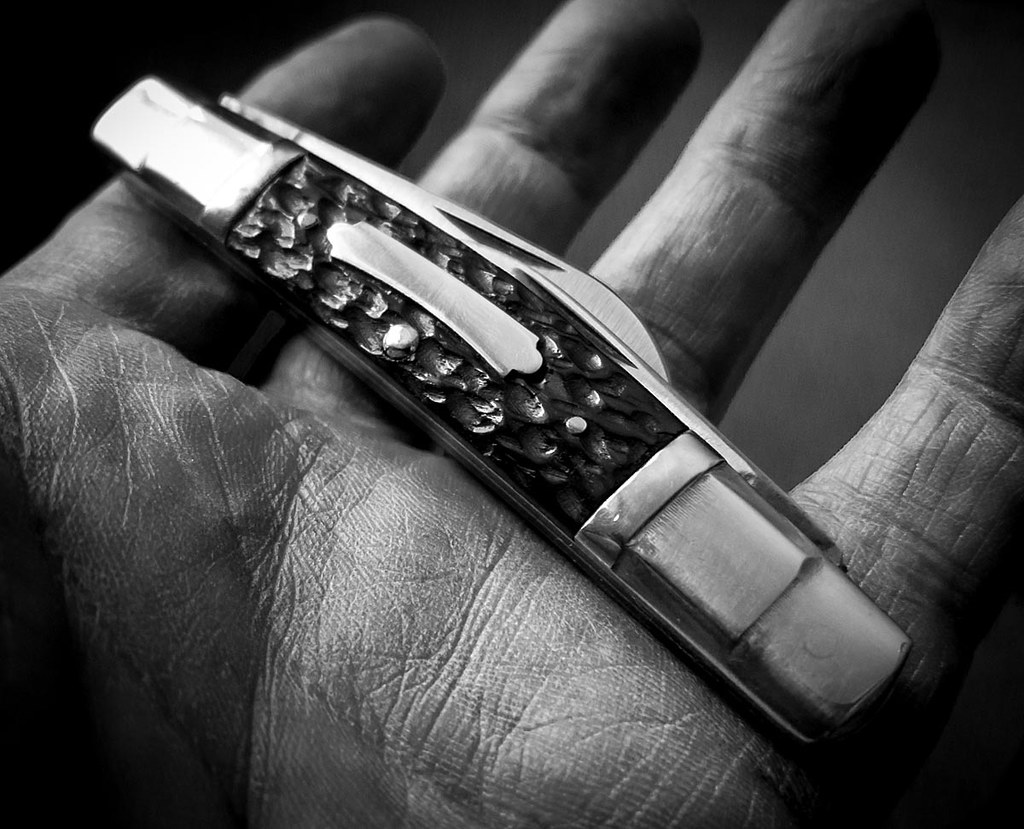Here's a fluted and pinched bolster from a congress knife, recovered from the wreck of the SS Schomberg, sunk off the coast of southern Australia in 1855.

The fluting is narrower than rat-tail filing, and bordered by threading. Your example posted above, Greg, is just a kind of wide threading, I think.
Good idea for a thread, Greg. It's interesting to me that this whole intricate field of pocket knife craft is almost a lost art, despite the current popularity of traditional styles and patterns.
It seems most bolsters now are drop forged, and I don't recall seeing contemporary custom traditional knifemakers really going all out with the old bolster pattern recreations, either.
As an example, look how wild some of the styling and shaping is in some of these bolsters from Smith's Key (1816).

 View attachment 710304
View attachment 710304




View attachment 710304









 John_Primble_morning by GaryWGraley, on Flickr
John_Primble_morning by GaryWGraley, on Flickr Primble_hand_bw by GaryWGraley, on Flickr
Primble_hand_bw by GaryWGraley, on Flickr
